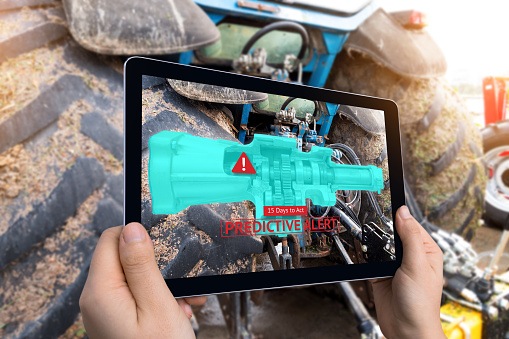What Is Predictive Maintenance (PdM)?
Predictive maintenance is a technique used to predict when maintenance is necessary and prevent unnecessary downtime. Based on data collected by sensors and other IoT devices during normal operation, it detects possible defects and allows you to fix them before failure even occurs.

Predictive maintenance allows the maintenance frequency to be as low as possible. Compared to reactive and preventive maintenance, predictive maintenance is better at decreasing downtime, increasing productivity and eliminating breakdowns.
How Does Predictive Maintenance Work?
The first step in practicing predictive maintenance is establishing a baseline. That way when you start monitoring your equipment there is base to compare any anomalies to. From this point on, if any anomalies occur, your CMMS (or BMS) can notify you about the danger of failure and trigger necessary maintenance procedure.
Predictive maintenance sensors collect data for vibration analysis, oil analysis, thermal imaging, and other symptoms that can indicate an anomaly.
Different methods are used for various equipment. For example vibration analysis is suitable for heavy machinery while infrared analysis is better for electrical equipment since it doesn’t rely on asset’s rotational speed or loudness.
Benefits of predictive maintenance
According to a paper by the US Department of Energy, if predictive maintenance is implemented correctly and maintenance is only performed when necessary, several cost savings occur:
- Reduction in downtime: 40% to 45%
- Reduction in maintenance expenditures: 25% to 30%
- Increase in productivity: 25%
- Elimination of breakdowns: 70%
Predictive maintenance has also been shown to lead to a tenfold increase in ROI.
How to implement predictive maintenance
Predictive maintenance usually comes with high implementation costs, but if conducted properly it delivers many benefits and high ROI.
1. Establish a baseline
First of all, you have to establish an acceptable condition limits for assets which will be monitored by IoT so that they can recognise anomalies and notify you.
2. Install IoT devices
You have to install these devices in order to be able to receive data in real time. By using IoT devices you can have a realistic representation on what’s going on inside the asset, without any disruptions in productivity.
3. Connect devices to software
The IoT devices are connected to a software where data is collected and analysed. It is crucial to have a reliable CMMS capable of analysing the data properly.
4. Schedule a maintenance
Inspections are automatically triggered by a CMMS when the condition limit is exceeded, or when other anomalies occur.
Disadvantages of PdM
Compared to other forms of maintenance, the cost of IoT devices for condition monitoring used in predictive maintenance often high. There is also certain level of experience and expertise necessary, which might be harder to obtain.
It is also necessary to point out that predictive maintenance is not best for all assets, and it might be more cost-effective to choose other forms of maintenance.
Conclusion
Despite the higher cost of implementation, predictive maintenance can deliver high ROI and many other benefits to your company. If you are interested in finding out more, contact us at info@enectiva.cz.